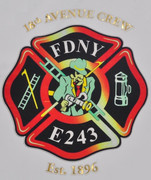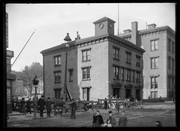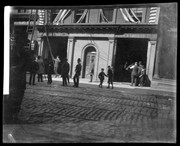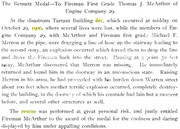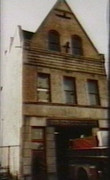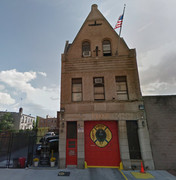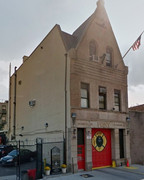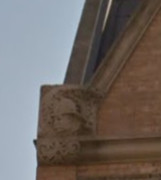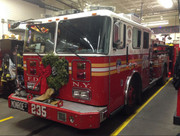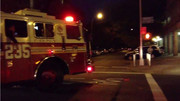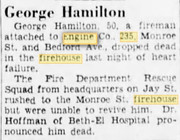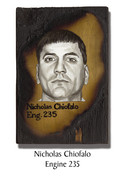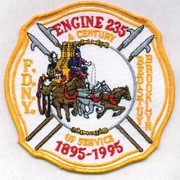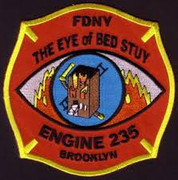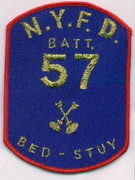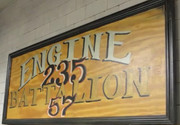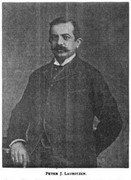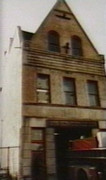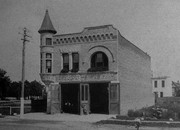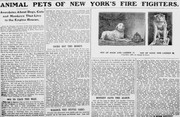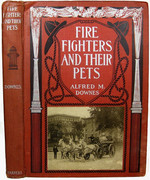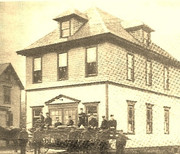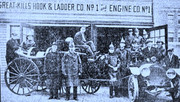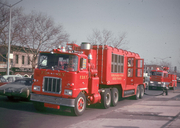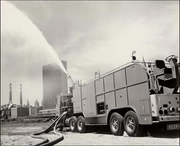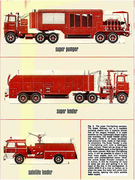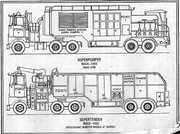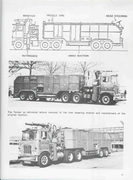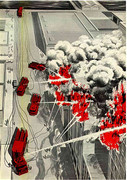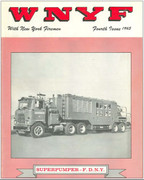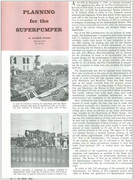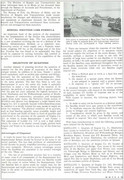Engine 243/Ladder 168/Battalion 42 firehouse 8653 18th Street, Bensonhurst/Bath Beach, Brooklyn
Engine 43 BFD organized w/Ladder 15 BFD 8653 18th Street 1896
Engine 43 BFD became Engine 43 FDNY 1898
Engine 43 became Combined Engine Company 43 1898
Combined Engine Company 43 became Combined Engine Company 143 1899
Combined Engine Company 143 became Combined Engine Company 243 1913
Combined Engine Company 243 became Engine 43 1929
Engine 243 moved 1157 79th Street at Engine 284 1988
Engine 243 returned 8653 18th Avenue 1989
Ladder 15 BFD organized w/Engine 43 BFD 8653 18th Street 1896
Ladder 15 BFD deactivated to form Ladder 15 FDNY 1998
Ladder 15 deactivated to form Combined Engine Company 43 FDNY 1898
Ladder 168 organized 8653 18th Street at Engine 243 1929
Ladder 168 moved 2428 86th Street at Engine 253 1988
Ladder 168 returned 8653 18th Street 1988
Battalion 42 organized 8653 18th Street at Combined Engine 143 1906
Battalion 42 moved 1157 79th Street at Engine 284 1988
Battalion 42 returned 8653 18th Avenue w/Engine 243 1988
Note: BFD Engine 43 and BFD Ladder 15 only operated two years as Brooklyn Fire Department companies. When Brooklyn became part of NYC in 1898, BFD became part of FDNY. Many BFD engine and truck companies became Combined Engine Companies. BFD Ladder 15 merged with BFD Engine 43 to become FDNY Combined Engine Company 43 (then renumbered CEC 143 and CEC 243) until FDNY Hook and Ladder 168 was organized in 1929. CEC 143 became Engine 243 when Ladder 168 was organized.
Engine 43 Brooklyn Fire Department organized February 1, 1896 - replaces New Utrecht Fire Department:


8653 18th Avenue firehouse:


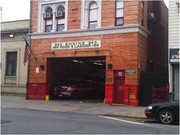



Engine 243:
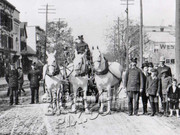

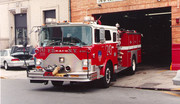


Engine 243 relocated Engine 151/Ladder 76 Tottenville, SI:



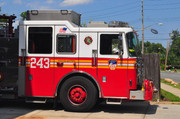
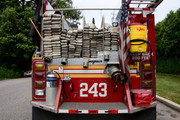
Ladder 168:
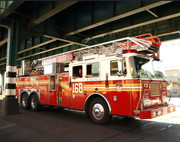
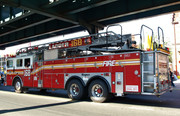

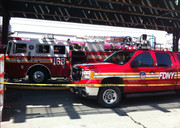
Battalion 42:

Engine 243/Ladder 168:
 https://www.youtube.com/watch?v=U8JuTPnd4jk
https://www.youtube.com/watch?v=qMMJf2_477w
https://www.youtube.com/watch?v=U8JuTPnd4jk
https://www.youtube.com/watch?v=qMMJf2_477w
http://www.fdnytrucks.com/files/html/brooklyn/e243.htm
Engine 243/Ladder 168/Battalion 42 Medals:
DONALD V. O'LEARY PROBIE ENG. 243 JUL. 5, 1960 1960 1961 BROOKLYN CITIZENS
RAYMOND M. B BUSSI FF. ENG. 243 MAY 12, 1987 1987 1988 ZAHN
CHARLES A. B MERZ FF. LAD. 168 APR. 17, 1939 1939 1940 JAMES GORDON BENNETT
CHARLES A. B MERZ FF. LAD. 168 APR. 17, 1939 1942 1942 HARRY M. ARCHER


FF Merz saved the life of another firefighter at this 3rd alarm.
LOUIS W. B KEEFE FF. LAD. 168 DEC. 20, 1951 1951 1952 KANE
CHARLES J. B DONOGHUE FF. LAD. 168 MAR. 13, 1957 1957 1958 PRENTICE
ANTHONY B PICOZZI FF. LAD. 168 JAN. 25, 1981 1981 1982 SIGNAL 77
JOHN B KROON FF. LAD. 168 JUN. 3, 1996 1996 1997 BROOKLYN CITIZENS
Engine 243/Ladder 168 - January 20, 2008 fire: http://www.nydailynews.com/news/die-brooklyn-apartment-blaze-article-1.344015
DAVID J. OLIVER BAT. CHIEF BAT. 42 NOV. 12, 1925 1925 1926 KENNY


Engine 243/Battalion 42 LODDs:
FF C. Stephen Auditore, Engine 243, Brooklyn box 3430, collision with asphalt truck responding, died from burns, October 18, 1943


FF Harold Hastings, Battalion 42 aide, Brooklyn box 44-3300, Waldbaums Fire, roof collapse, August 2, 1978

 https://www.youtube.com/watch?v=pTzBg1YIZmI
https://www.youtube.com/watch?v=pTzBg1YIZmI
Never forget.
Bensonhurst and Bath Beach:
http://en.wikipedia.org/wiki/Bensonhurst,_Brooklyn
http://en.wikipedia.org/wiki/Bath_Beach,_Brooklyn
http://forgotten-ny.com/2010/07/bath-beachs-cropsey-avenue/
http://forgotten-ny.com/2011/12/86th-street-in-bensonhurst/
https://www.youtube.com/watch?v=Ujz29iL_9EE
